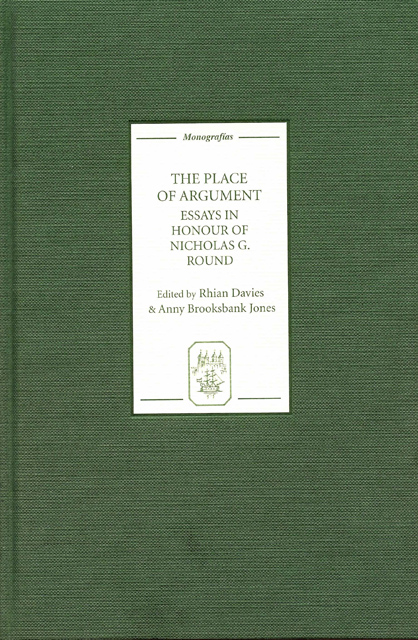A Poem For All Seasons: Gil Vicente in Translation
Published online by Cambridge University Press: 10 May 2023
Summary
Twenty-first-century readers may be surprised at the ease with which the poems of Gil Vicente (1465?–1536?) continue to travel across temporal, spatial and linguistic borders, thus becoming new -ï or renewed -ï lyrics for the enjoyment of successive generations. One Vicentine poem in particular illustrates this phenomenon, ‘En la huerta nasce la rosa’, included in the Auto de los cuatro tiempos, written and performed for the court of D. Manuel I and first translated into English just over three centuries ago.
En la huerta nasce la rosa
quiérome ir allá
por mirar al ruiseñor
cómo cantaba.
Por las riberas del río
limones coge la virgo
quiérome ir allá
por mirar al ruiseñor
cómo cantaba.
Limones cogía la virgo
para dar al su amigo
quiérome ir allá
para ver al ruiseñor
cómo cantaba.
Para dar al su amigo
en un sombrero de sirgo
quiérome ir allá
para ver al ruiseñor
cómo cantaba.
This chapter brings together a love of Gil Vicente, an abiding interest in translation, and a perverse enthusiasm for the arcane, all of which I can honestly attribute to Nick Round. Much of the ‘detective work’ was already done by the North American scholar Constantine Stathatos, who has produced and published a series of bibliographies to facilitate the task of the Vicentine scholar. Much of the data retrieval was facilitated by my generous collaborators, Dr Manuela Carvalho, Dr John Hobbs, Dr Amélia Hutchinson, Dr Helen Kelsh, Dr Ann MacLaren, Dr Sonia Pérez Villanueva, Dr Maria Helena da Fonseca de Oliveira Rodrigues, Dr Jane Whetnall, Dr Claire Williams.
The author holds the University of Birmingham’s Cátedra Gil Vicente.
Para dar al su amigo
en un sombrero de sirgo
quiérome ir allá
para ver al ruiseñor
cómo cantaba.
In fact, this poem has been rendered in English, in whole or in part, by ten different translators, and their translations have appeared in print and on the Internet at least 23 times. This may not seem especially significant, until we consider that the 1824 translation was reproduced as recently as 2003, thus prevailing, in a Darwinian sort of way, over its successors and rivals.
The first English translator was Sir John Bowring (1792–1870), remembered as a diplomat, political commentator, linguist, minor poet and the compiler of Ancient Poetry and Romances of Spain (1824), in which he included seven Vicentine lyrics:
‘Muy graciosa es la doncella’ (Auto de la sibila Casandra)
‘En la huerta nasce la rosa’ (Auto de los cuatro tiempos)
‘Del rosal vengo, mi madre’ (Triunfo do Inverno)
‘Si dormís, doncella’ (Quem tem farelos?)
‘Mal haya quien los envuelve’ (Auto de los cuatro tiempos)
‘Sañosa está la niña’ (Auto de la sibila Casandra)
‘¿Cúal es la niña/ que coge las flores?’ (O Velho da Horta)
The acknowledged source text is the Copilaçam de todas as Obras, Lisbon, 1562 (1824: 315), but his selection and ordering of the poems are identical to those made by Johann Nikolaus Böhl von Faber (1821), an important participant in what Osório Mateus has described as ‘a revolução bibliográfica nas cidades da Alemanha’ (2002b: 258).
- Type
- Chapter
- Information
- The Place of ArgumentEssays in Honour of Nicholas G. Round, pp. 161 - 178Publisher: Boydell & BrewerPrint publication year: 2007

